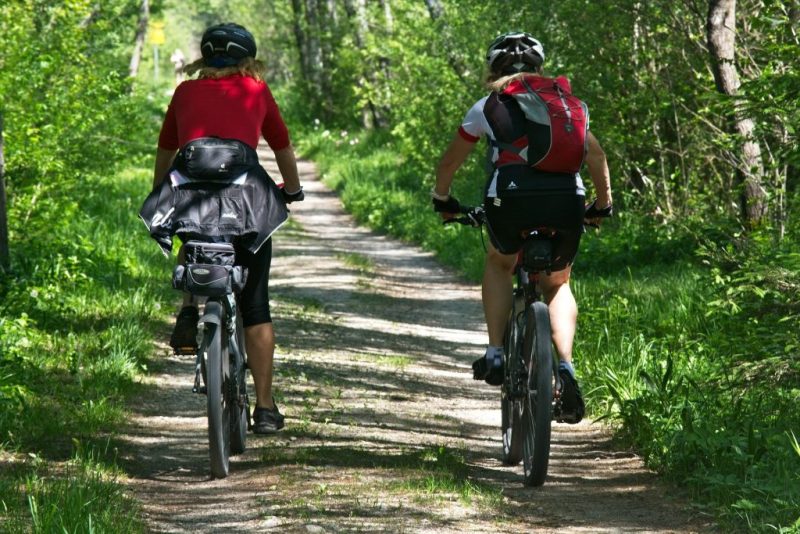WHAT IS A BIKE? WHAT ARE THE PARTS OF A BICYCLE?
What is a bicycle? What parts does it consist of? We will cover them in this article.. Bicycle, or unpopular formerly known as velespit, is a non-motorized or electric powered, two- or three-wheeled, pedal-driven, human-powered or electric transportation vehicle.. Besides transportation and entertainment, it is also used in cycling.. There are types such as BMX, Mountain bike, city bike, tandem (double bike), touring bike, road bike.. There are geared and gearless types.
Today, the bicycle has become a versatile miraculous tool that has made great progress thanks to the developing technology.. Today, cycling has become even more enjoyable with 21-speed, automatic transmission, electric motor, functional and light bicycles. It has become one of the most important means of transportation, and even used as a short distance (5-6 km) transportation vehicle in modern life.
Perhaps most of us can use this versatile miraculous tool, but we do not know enough about its parts.. In fact, knowing the parts that make up your bike is not a bad idea and can help us in some cases.
A bicycle is actually a fascinating machine with many parts and most of us don’t know the names of these parts.. Simply knowing the basic part names can help us and even make you feel more confident about cycling.. For this reason, we have compiled the parts that make up almost the entire bike for you.. What is a bicycle? What parts does it consist of? Here’s a bike and its parts.
BASIC BIKE PARTS
What is a bike? What parts does it consist of? What is a bicycle? we mentioned above. What parts does it consist of? The answers to the questions are listed below.
Pedal
This is the part on which a cyclist puts his feet. The pedal is attached to the crank, the component that the cyclist turns to rotate the chain, which provides power to the bike.
Front Gear
The front derailleur is one of the essential parts of the gear system.. Determines the position of the chain on the front sprocket. Mechanism for changing front sprockets by lifting the chain from one sprocket to another; allows the cyclist to adapt to road conditions.
Chain
A metal link set that engages with the sprockets on the chain wheel and sprocket to transmit the pedaling motion to the rear wheel. The most important part of the chain gear system. It transfers the power from the pedal to the wheels via the rear gear.. For this reason, it is the most worn part of the gear system.
Chain Support
Chain support, or rear derailleur, is one of the basic parts of the bicycle gear system.. It is the part that connects the pedal and crank mechanism to the rear wheel hub.. It is the name of the mechanism that determines the position of the chain on the ruble (cassette, rear sprocket) rear derailleur. Two rollers on the rear derailleur. Of these, the tension roller at the bottom is the guide roller at the top.
Rear Gear
The mechanism for changing the rear gears by lifting the chain from one gear wheel to the other; It allows the cyclist to adapt to road conditions.
Rear Brake
It is the mechanism that stops the bicycle by means of a brake cable to stop the bicycle.
Seat Pipe
The part of the main frame that leans back slightly, includes the seat post and participates in the pedal mechanism.
Seat Support
The tube connecting the top of the seat tube to the rear wheel hub.
Seat Post
The component that supports and connects the saddle placed at variable depth on the seat post to adjust the height of the seat.
Saddle
Small piece attached to the frame of the bike triangle saddle. The basic criterion for choosing a saddle is the width.. The rider’s weight is transferred to the saddle from the hip bones, at the widest points of the saddle. For this reason, the seat used is chosen with a width suitable for the hip bones.
Cross
The horizontal part of the bicycle frame connects the head tube to the seat tube and fixes the frame.
Down Tube
Part of the frame connecting the head tube to the pedal mechanism; it is the longest and thickest part in the frame.
Tire Valve
Small inlet valve that closes the inflation opening of the inner tube; It allows air to enter but prevents it from escaping.
Tire
The structure is made of cotton and steel fiber coated with rubber, mounted on the rim to form the inner tube casing.
Wheel
The metal circle that forms the circumference of the wheel and on which the tire is mounted.
Hub
The middle part of the wheel where the spokes are spread. Inside the hub are ball bearings that allow the axle to rotate around it.
Fork
Two tubes attached to the front wheel hub and attached to both ends of the front wheel hub.
Front Brake
Mechanism to stop the wheel by forcing a pair of brake pads against the sidewalls to slow down the front wheel via a brake cable.
Brake Lever
<
The lever attached to the handlebar to activate the brake lever with a cable.
Head Tube
A height-adjustable mechanism that uses ball bearings to transmit steering motion to the fork.
Handlebar
Device consisting of two handles connected by a pipe to steer the front wheel to steer the bike. Handlebar is the most important equipment that determines comfort in cycling tours.. Choosing the right handlebar is important in order to make the hands and arms comfortable and not to experience back pain during tours.
Brake Cable
Sheathed steel cable that transmits the pressure applied on the brake lever to the brake.
Gear
Gear lever used to change gears via a cable that moves the shifter.
OPTIONAL BICYCLE PARTS
Foot clip
It is a tool that prevents the feet from slipping when stepping on the pedals, prevents the pedal from getting rid of the foot, and covers the front of the feet, called the hearthyle, keeps the feet in proper position and attaches to the pedals.
Reflector
It is a device that reflects light so that other road users can see the cyclist.
Fender
Curved metal piece that covers part of the wheel to protect the cyclist from splashing water.
Back Light
Red light that makes the cyclist visible in the dark.
Generator
Front and rear lamp Generator Mechanism activated by the rear wheel that converts the movement of the wheel into electrical energy to power the sleds.
Carrier (Rear Rack)
Mechanism attached to the rear of the bike to carry bags on both sides and packages on top.
Tyre Pump
Device that compresses air and is used to inflate a bicycle tire.







